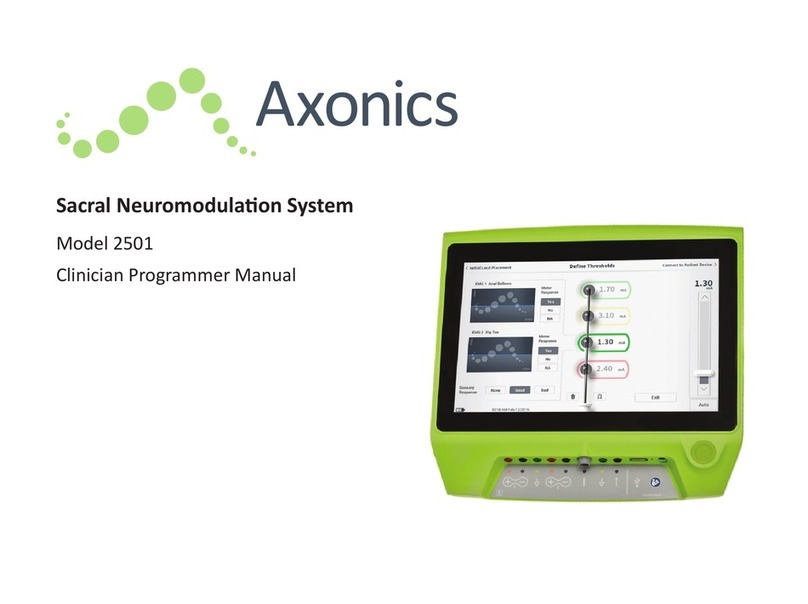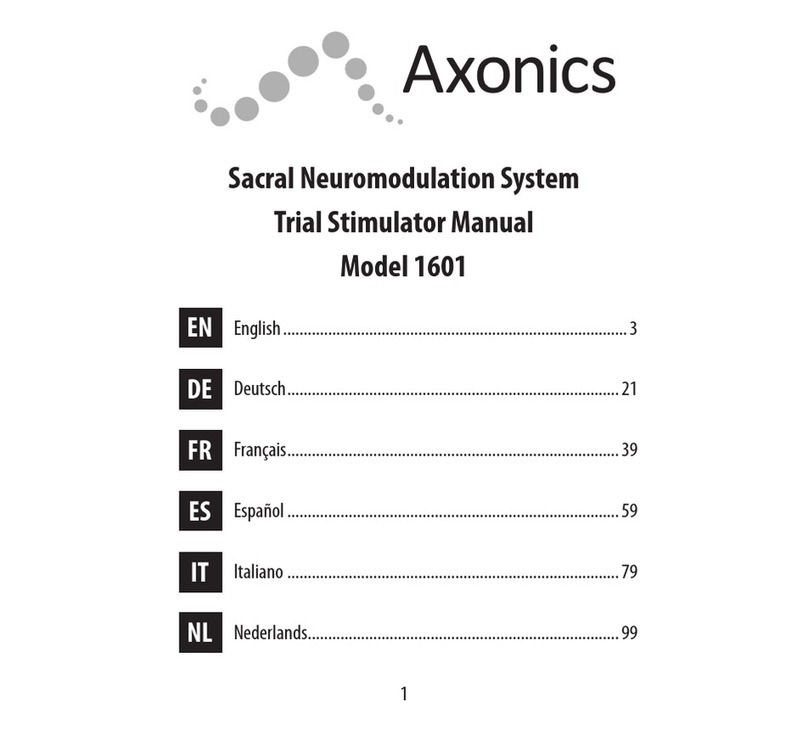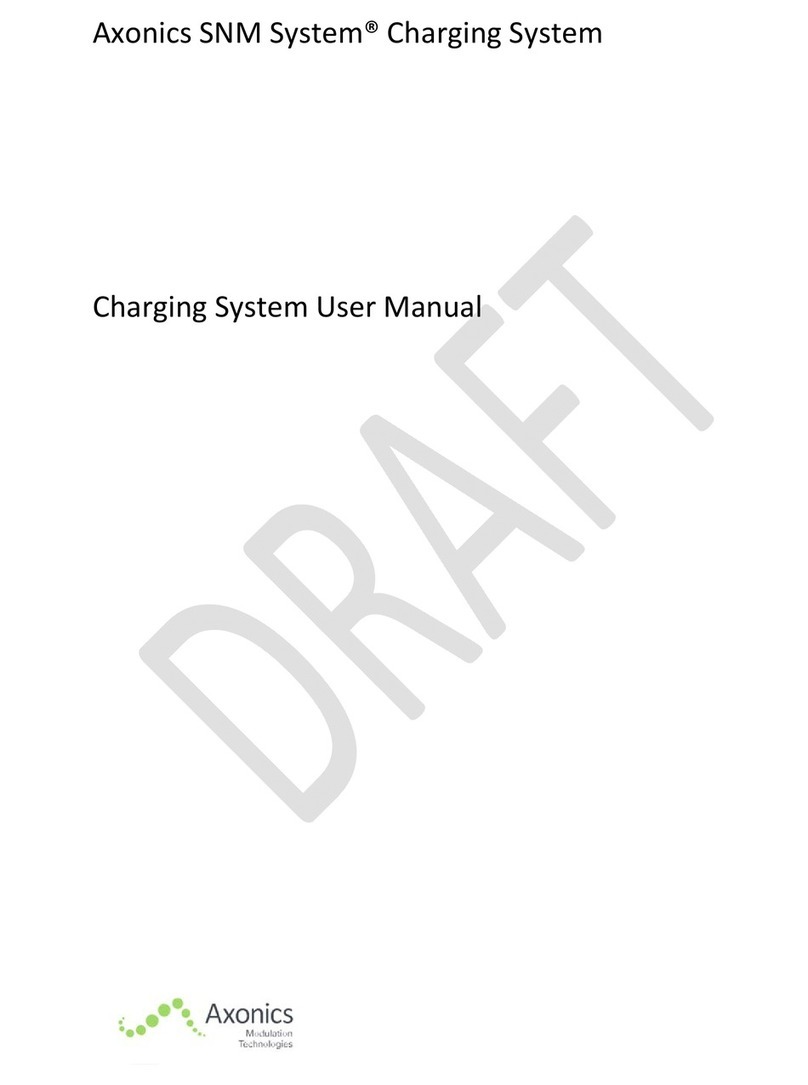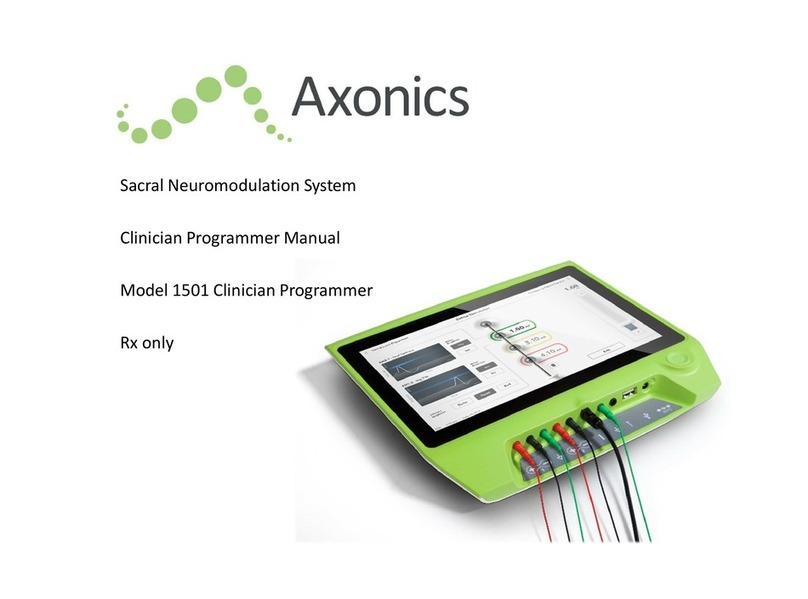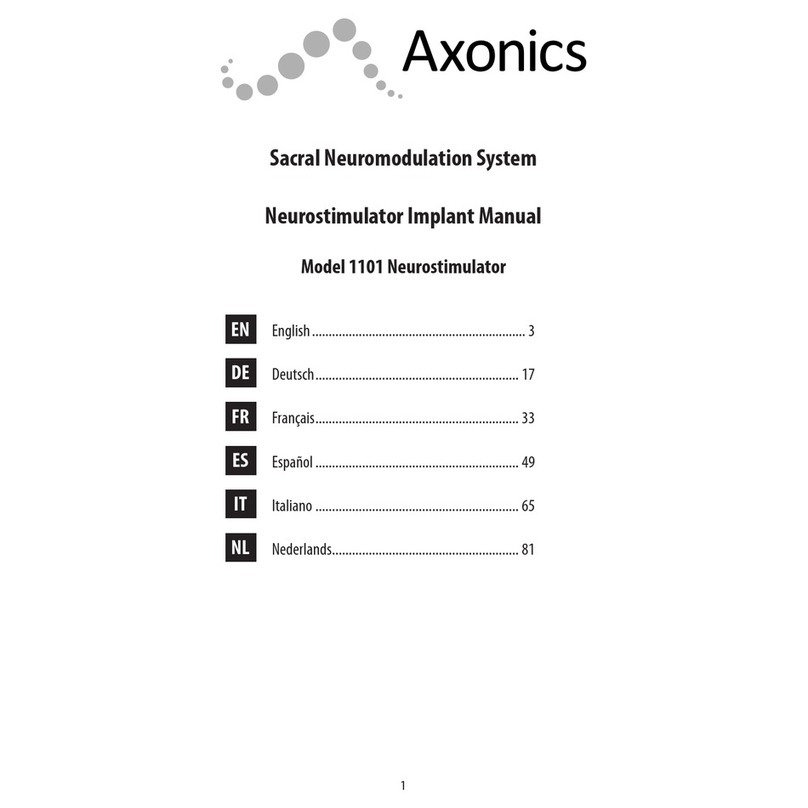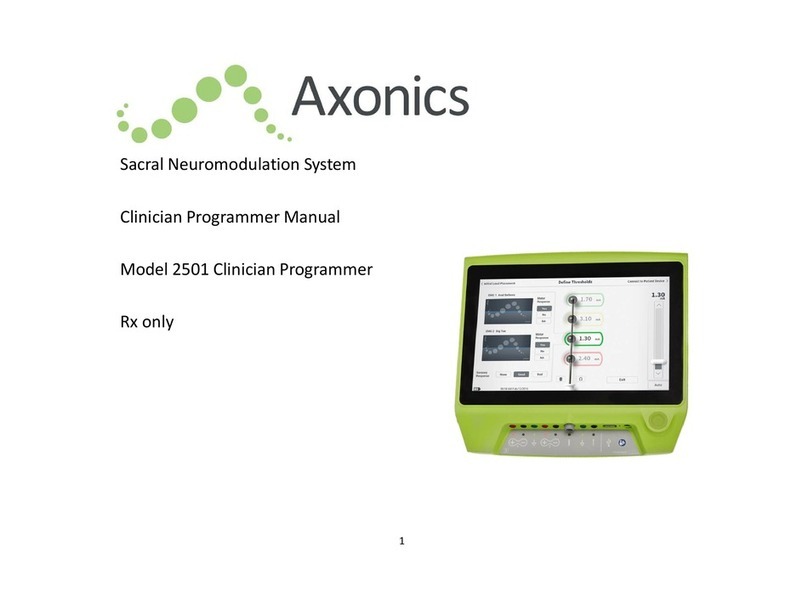
8
Electromagnetic interference (EMI)
EMI is energy that can interfere with the function of the Axonics SNM System. This energy can be generated by equipment found
at home, work, or in public. The Axonics SNM System includes features that provide protection from EMI. Most electrical devices
encounteredina normal day areunlikely toaffect the operationof theTS.While everydayelectrical devices areunlikelyto affect the
TS,thereare strong sourcesofEMI thatmay temporarilyaffect the operation ofyour stimulator, includinganti-theft detectors found
in stores used to detect stolen merchandise. If patients encounter any of these electrical devices, they should walk as far away from
the sides of the anti-theft detector when passing through.
At the Airport, Courthouses, etc.
Ifpatientsencounterwalkthroughmetal detectorsor security archways they should walk-throughata normal pace.Thesedetectors
should not affect the Stimulator. Hand-held security wands should be passed over the Stimulator quickly and should not affect the
stimulator. Full-bodysecurity scanners(millimeter wavescanners)areused bytheTransportation SecurityAdministration(TSA)and
are considered safe in patients that have a stimulator.
Additionally, patients should minimize their exposure by not lingering in the immediate area of the security systems. Some anti-theft
detectorsmaynotbevisible.Ifpatientsfeelpoorly,theyshouldwalkawayfromtheareaandanti-theftdetectorsandsecurity scanners.
Case Damage
TheTrial Stimulator contains battery chemicals that could cause severe burns if the case were ruptured or pierced.
Effects on other implanted devices
The effect of the Axonics SNM System on the operation of other implanted devices is not known. This includes devices such as
cardiac devices, other Neurostimulators, and implantable drug pumps. In particular, if the Axonics device is on the body near one of
these devices, they may have sensing problems and/or inappropriate device responses. Clinicians involved with both devices should
investigate potential interference issues before surgery. The programming of the devices may need to be optimized to provide
maximum benefit from both devices.
Trial Stimulator interaction with implanted cardiac devices
When a patient needs both an Axonics SNM System and an implanted cardiac device, interactions between the two devices should
be discussed by the patients’ physicians before surgery. Such devices may include pacemakers or defibrillators. The physicians
involved may include cardiologists, electrophysiologists, urologists, and urogynecologist. To reduce potential interference, the TS
110-0078-001 rev D_output.indd 8 1/10/20 11:29 AM






